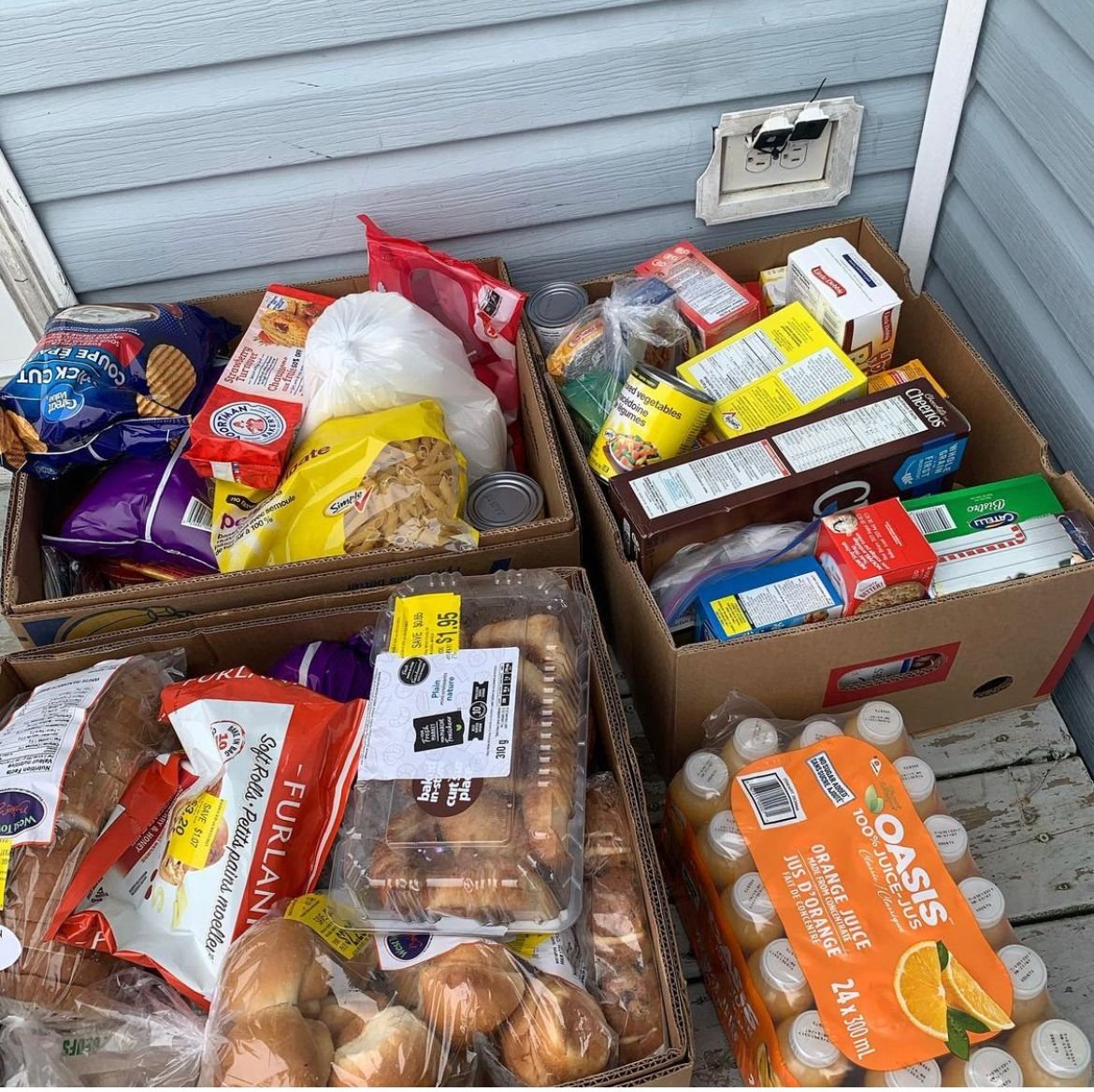
Pandemic Response
COVID-19 Food Security Working Group
In 2020, we began co-chairing the COVID-19 Food Security Working Group, bringing together many different folks in the emergency food sector to get in touch with one another and discuss the ways the pandemic affected their operations and the clients they serve. Feedback from members of this group has made it clear that having open communication was a big help for folks in this sector.
The COVID-19 working group continued into 2021. Every second Friday the working group still meets via Zoom. These biweekly meetings have allowed folks to make connections, support one another, “rescue” food so that it does not go to waste, and much more. Having a forum for folks to share their highlights and concerns and lean on each other as resources has continued to be an important part of our COVID-19 response, and we expect these meetings to continue into 2022.
Emergency Fund
In 2021, we continued to administer the Community Food Program Support Fund, a quick-turnaround fund that provided supplemental support to food programs across the province to help them meet pandemic-induced demands. This fund was supported by contributions from the Government of Newfoundland and Labrador, Community Food Centres Canada, and a number of other funding partners.
Our final round of funding, a total of $63,000 was disbursed in May and June, with 31 organizations across the province funded, bringing the total disbursements from the fund to $902,500 since inception.
Community Food Helpline
A hamper delivery arranged by the Local Wellness Collective. Photo by Jennifer Collins
The Community Food Helpline began in May of 2020 as a response to the COVID-19 pandemic. We compiled a list of emergency food programs all over the province (which can now be found through 211’s database) and had it available online. While some folks could access the Food Programs List, many people did not have access to the Internet, while others did not have the knowledge to use it. We and our partners also anticipated an uptick in the number of new food bank users, which made it essential for people to have all the information they needed in one place.
To overcome this problem, the Community Food Helpline was born. At the end of last year, we had secured funding to allow the line to run until March 31, 2021; however, with help from our partners at End Homelessness St. John’s (for financial resources in St. John’s) and the NorthPine Foundation (for financial resources outside metro), as well as meals from the Hungry Heart Café, collaboration with SeniorsNL and 211/Find Help, and awe-inspiring volunteer assistance from the Local Wellness Collective, the Helpline has taken on a life of its own.
Some major wins from this year on the Helpline consist of staffing change, including: the addition of a full-time coordinator position, three part-time program assistant positions, and a part-time case manager position for clients with more complex circumstances. Together, this amazing team has been able to fulfill over 96% of requests that have come into the line since December 2020.
Some Stats
We are happy to be able to provide this very necessary service, particularly as it relates to the COVID-19 pandemic, and we are incredibly grateful to our partners, funders, and Helpline staff for making this project possible.
While we are grateful to be able to fill a gap, we have been faced with a stark reality in our work on the line. Here are some of the most striking stats from the line this year:
At the time of writing, our line has received over 4200 requests and the Local Wellness Collective has completed approximately 3000 deliveries.
97% of calls come from Eastern Newfoundland, 1% from Central, and 1% from Western
Folks have contacted us for assistance from nearly 70 communities across the province
There has been a 42% increase in call volume since July 2021
In November 2021, our call volume reached 160 people in the callback queue, the highest we have recorded
This number is more than double the average number of callbacks (at any given time) in October 2021, which was around 70
Over the course of Fall 2021, we have seen a significant increase in reports of:
Emergency calls (no food in their house, haven’t eaten in days)
Unstable housing (utilities turned off or interrupted; eviction; loss of food; safety issues; theft)
Overall poverty (income not enough to sustain basic needs)
These statistics, and the stories behind them, speak to the reality of emergency food aid: it will never be enough. Recent research shows that fewer than 1 in 10 food-insecure households accessed food aid in the past 30 days - so the real demand is potentially 10 times more than the system is currently seeing.
The short version: what we have learned since operating the Community Food Helpline cements what we already know, which is that deep, systemic change is the only answer to addressing food insecurity, and we will continue to work towards that in 2022 - while also supporting the grassroots efforts to leave nobody behind in the meantime.


